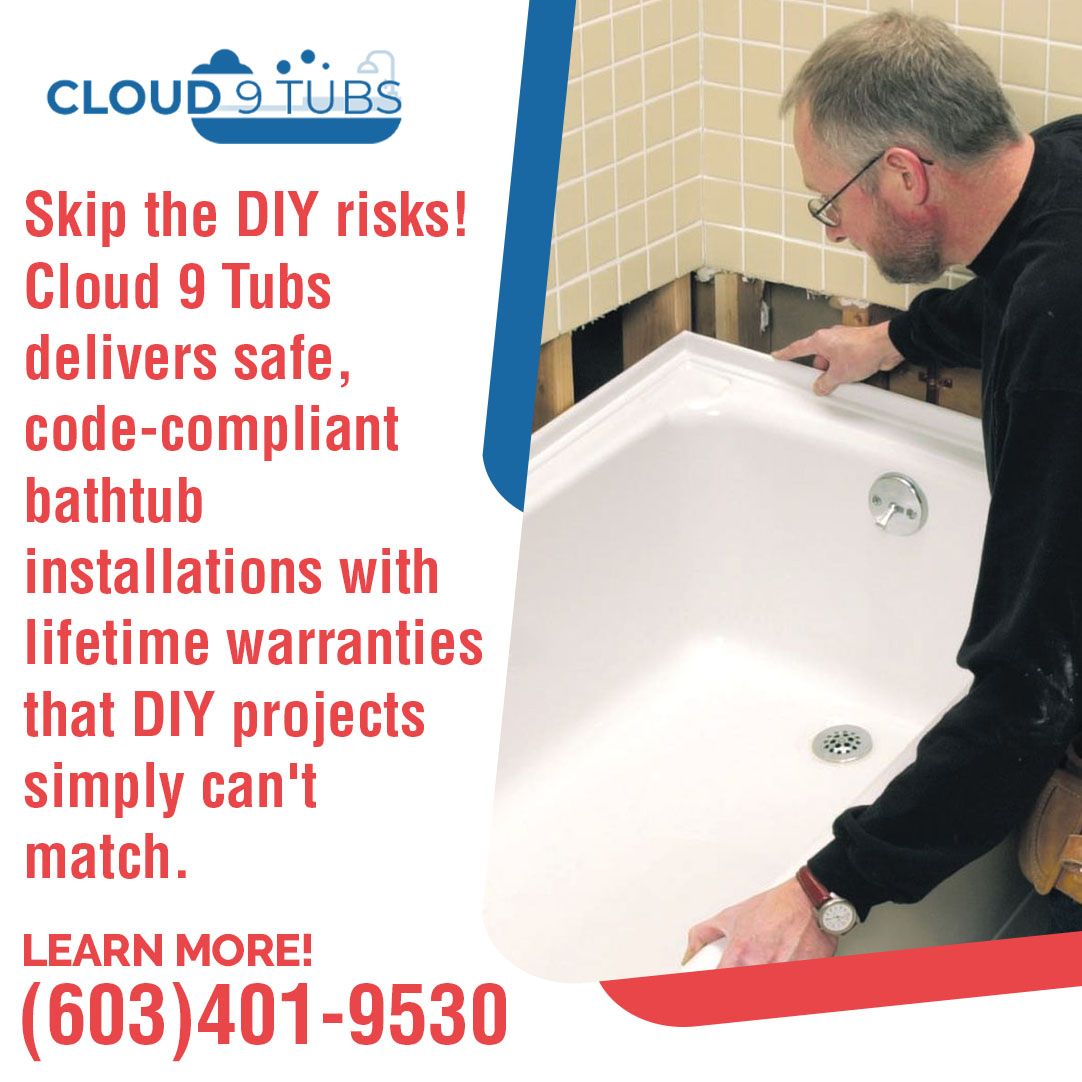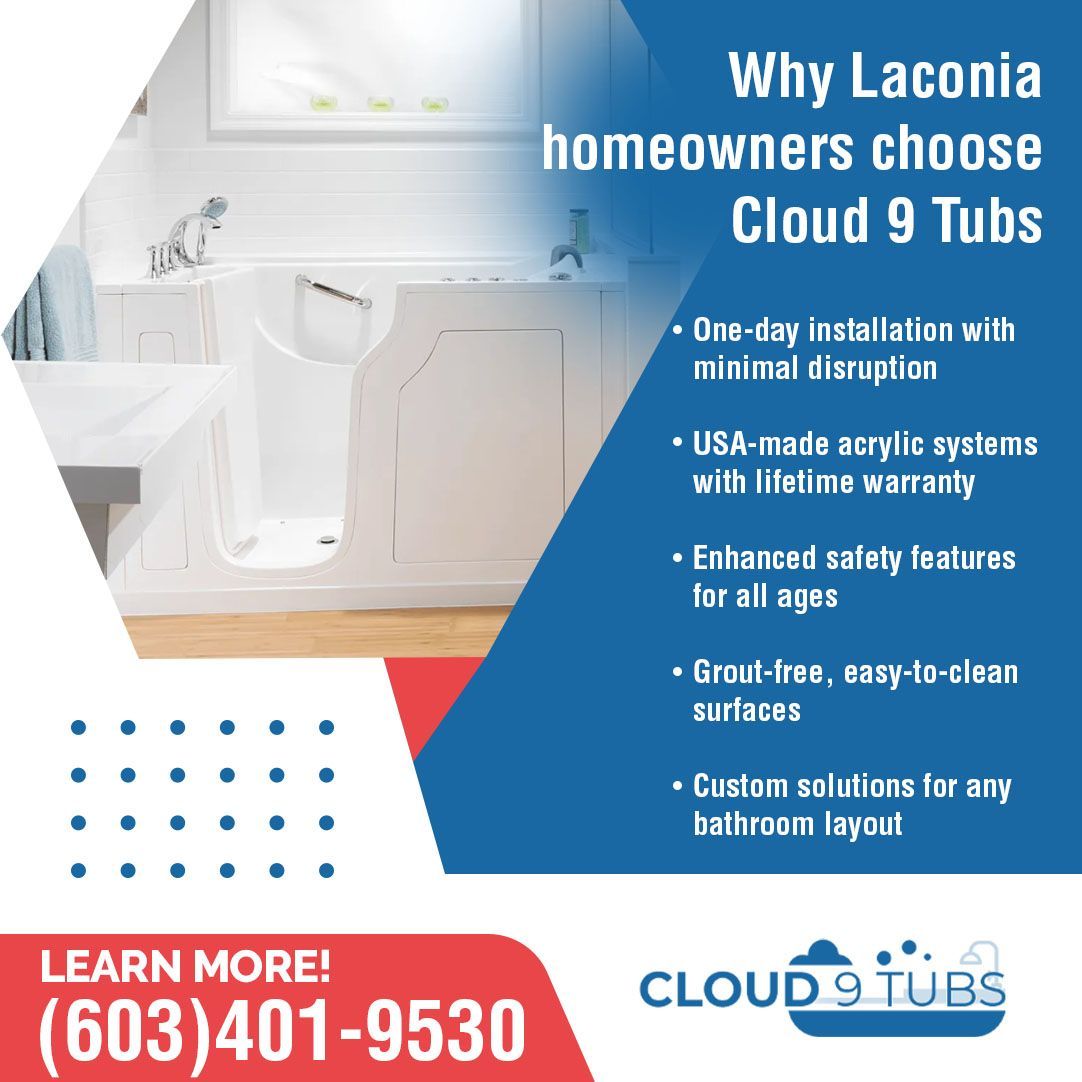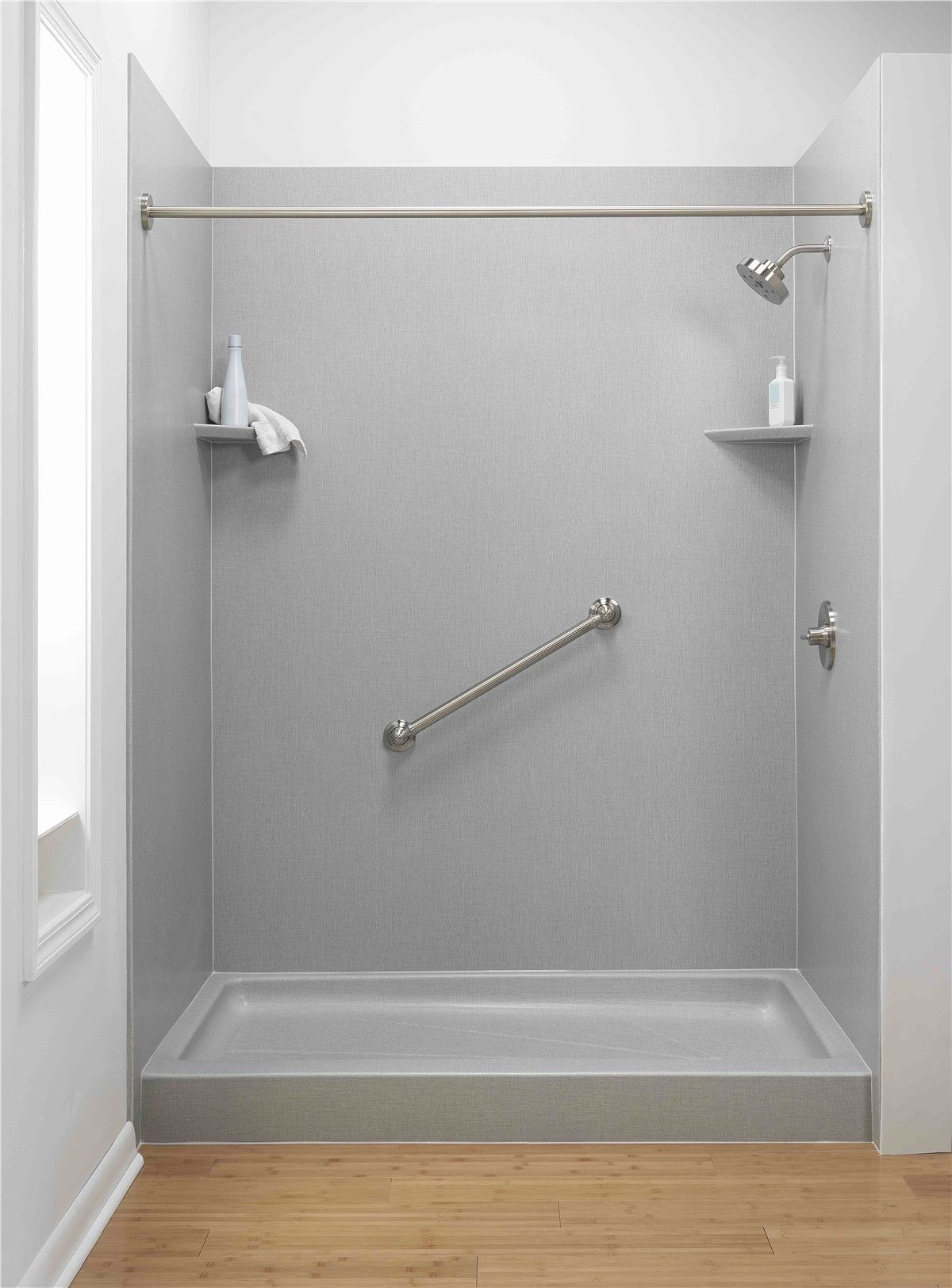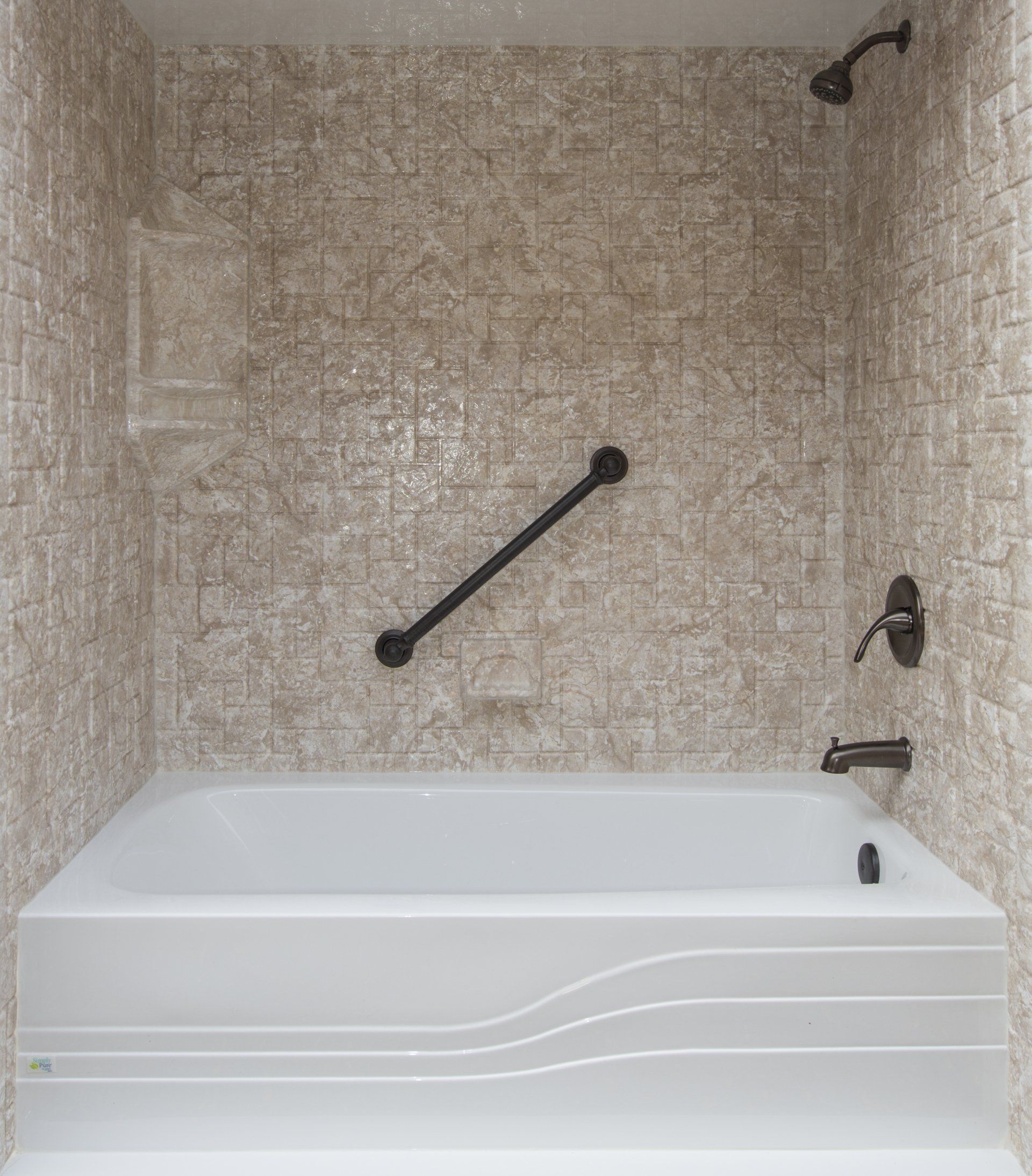Bathtub Installation in Dover, NH: Walk-In vs. Standard Tubs Compared
Walk-in bathtubs and standard tubs each serve different household needs. Choosing between them depends on mobility, space, and usage habits. A walk-in tub offers a safer bathing experience for people with limited mobility, while a standard tub may suit those with more flexibility. At Cloud 9 Tubs LLC, we help homeowners in Dover, NH, choose the right tub for their space and lifestyle, backed by expert bathtub installation services. The key differences between the standard and walk-in options are discussed in this article, with an emphasis on how each works in a real house. Whether you're renovating for accessibility or updating an older bathroom, knowing the practical pros and cons of each type can help you choose confidently.
How the Right Bathtub Supports Everyday Living
The right bathtub improves daily routines by supporting comfort, safety, and ease of use. The bathroom is more than a functional space. It plays a role in personal health and daily care. For people with limited mobility or chronic conditions, choosing the correct tub can reduce injury risk and make independent bathing possible.
Why Tub Selection Impacts Safety, Comfort, and Independence
A poor bathtub fit can lead to slips, strain, or lack of access. According to the CDC, over 230,000 bathroom injuries occur in the U.S. each year, with most involving tubs or showers. For anyone with mobility limitations, a walk-in tub offers safer entry, built-in seating, and support rails. By contrast, standard tubs require more effort to step over and can pose challenges for balance or recovery after surgery.
Comfort also depends on how long and how often the tub is used. Soaking tubs with ergonomic contours may suit some, while others may prefer quick, accessible designs that prioritize entry and exit. Walk-in models allow seated bathing, which lowers fatigue during use.
Factors That Matter Most to Homeowners in Dover, NH
Local homeowners prioritize space, safety, heating efficiency, and ease of use. Older bathroom layouts in many homes can be narrow. Compact walk-in bathtubs can be retrofitted without removing walls while still offering the benefits of hydrotherapy and easy access.
Dover residents often consider winter usage, too. Heated surfaces or rapid-fill systems are helpful features in colder climates. Energy efficiency is another common concern, especially with rising utility costs. Choosing the right bathtub means evaluating both fit and operating costs.
Matching Product Choice with Individual Routines and Health Needs
Tub choice should reflect how each person uses the bathroom, not just how it looks. For someone who bathes daily for muscle relief, a walk-in tub with water jets and a hand-held shower may make sense. For families with small children, a wider standard tub might offer more room for bathing multiple children.
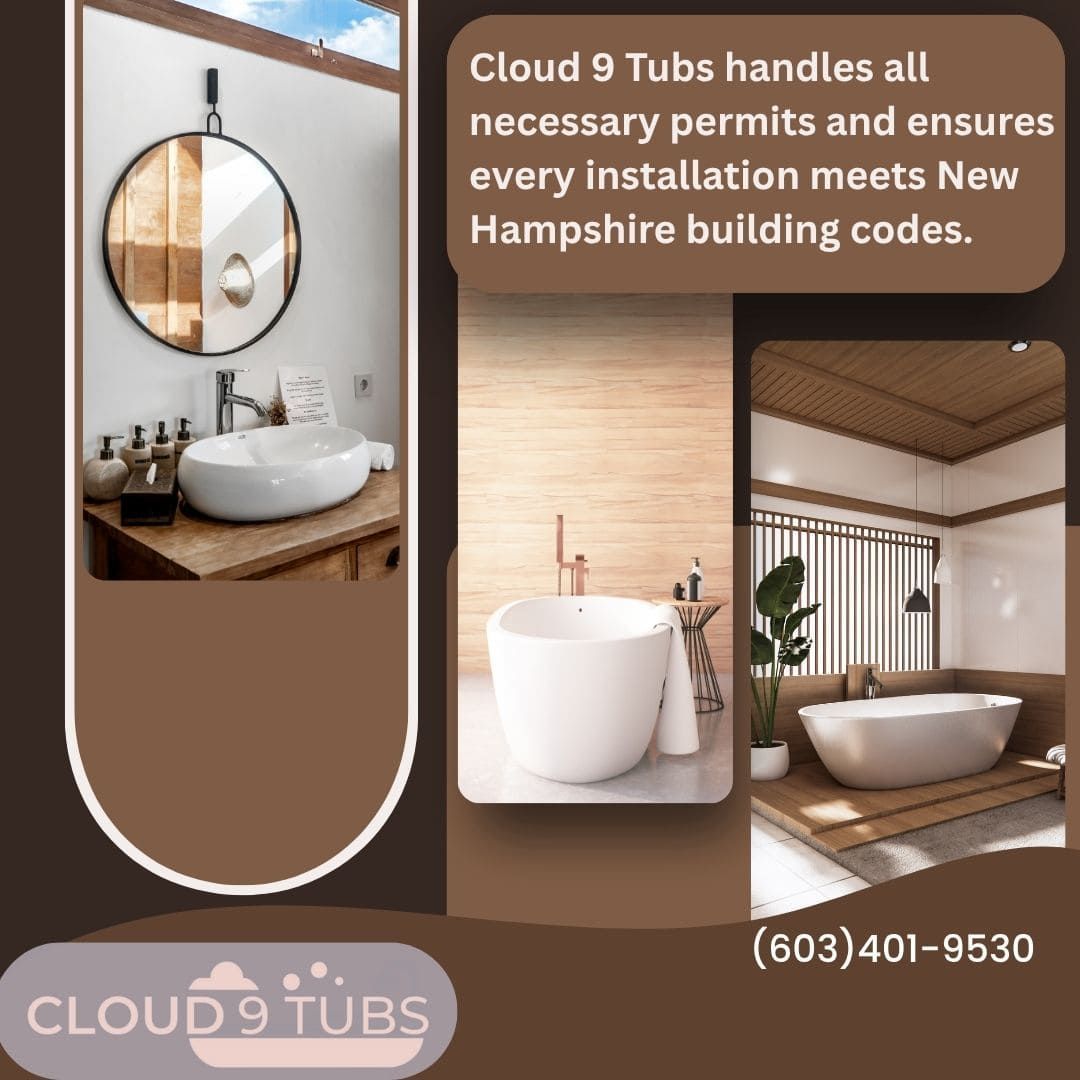
Those with arthritis, recent joint replacements, or chronic pain often find that walk-in tubs reduce physical strain. On the other hand, someone in good physical condition may prioritize style, resale value, or dual shower-tub combos.
Whether installing a new unit or replacing an outdated fixture, Cloud 9 Tubs helps customers in Dover match their routines and home layouts with the right type of bathtub installation. Our focus is on safety, proper fit, and lasting quality.
Comparing Daily Use: Walk-In Bathtubs and Standard Tubs
Each tub type affects how users enter, move, and bathe daily. For homeowners in Dover, NH, daily use matters more than looks. How a tub handles water use, seating, and physical access plays a key role in deciding which model fits the home and its users best.
Entry, Exit, and Movement
Walk-in tubs use a door with low entry; standard tubs require stepping over the side. Standard bathtubs typically have a side wall 14 to 18 inches high. Stepping over this edge can be difficult for anyone with knee, hip, or balance problems. The risk of falls increases when the surface is wet or when handholds are missing.
Walk-in tubs often feature a door with a threshold as low as 3 to 7 inches. Users open the door, walk in, and close it before filling the tub with water. This allows safer entry with less strain. Grab bars and anti-slip floors in walk-in models further reduce accident risk.
In terms of movement, walk-in tubs are compact and designed for seated use. Standard tubs allow more legroom but often require more effort to stand up from the floor.
How Long Does Each Bath Take to Fill and Drain
Walk-in tubs take longer to fill and drain than standard tubs. Standard bathtubs usually fill in 4 to 7 minutes and drain quickly. Water use ranges from 25 to 45 gallons per bath, depending on the model and depth. Drain time is as fast as users can exit before it's fully empty.
Walk-in tubs must be sealed shut before filling and opened only after draining. This process takes longer. The average fill time is around 8 to 12 minutes, with drain times ranging from 2 to 6 minutes. It can be faster in models with dual-drain systems. Users stay seated throughout, which makes drain speed important. Water use is typically 45 to 60 gallons, though some models use slightly more.
Seating, Soaking, and Stretching
Walk-in tubs include built-in seats; standard tubs allow full stretch and recline. Built-in seats in walk-in tubs are typically 17 inches high, matching standard chair height, and align with the ADA (Americans with Disabilities Act) recommended seat height for accessible design. This makes them easier to sit in and stand up from, especially for older users or anyone recovering from injury. Seated bathing also uses less energy than kneeling or reclining.
Standard tubs offer more room to lie back and stretch. Soaking fully in a standard tub may be preferred by users who enjoy longer baths or use the tub for muscle recovery. However, this position can be difficult for those with joint issues or limited flexibility.
When choosing between a standard bathtub installation and a
walk-in bathtub installation, the user's physical needs and bathing habits should guide the decision. At Cloud 9 Tubs, we help Dover homeowners assess layout, water access, and user mobility to match the best option to daily needs.
Safety Features That Matter in a Residential Bathroom
Proper safety features in a bathtub reduce the risk of injury and support independent living. In homes across Dover, NH, especially those with older adults or people with limited mobility, safety is one of the top reasons homeowners contact a bathtub installation company. Whether upgrading a standard model or planning for aging in place, the right design features can make daily routines safer and more manageable.
Reducing the Risk of Slips and Falls
Walk-in tubs reduce fall risks with built-in safety features not typically found in standard tubs. Most standard bathtubs have smooth, slippery surfaces and high entry points. These conditions increase fall risk, especially when floors are wet. Walk-in tubs include:
Textured, non-slip flooring to reduce slipping when standing or moving.- Grab bars built into the tub’s interior or along the sides for added stability during entry and exit.
- Safety door locks that prevent leaks and help keep the door secure during use.
These features are designed to lower the risk of accidents and help homeowners feel more secure during daily use.
Designed for Aging in Place
Walk-in tubs support long-term mobility and allow users to bathe without physical strain or assistance. As people age, tasks that were once easy, like stepping over a tub wall or standing in a wet shower, can become difficult. Many Dover residents choose walk-in bathtub installation to make their homes safer without giving up comfort. Key benefits include:
Seated bathing that eliminates the need to lower oneself to the tub floor.- Low entry thresholds that reduce the effort needed to step inside.
- Ergonomic handles and controls that are easy to reach and turn.
These features help users maintain their routines and avoid relying on caregivers for daily tasks. For families planning to stay in their homes long-term, this kind of accessibility prevents future renovations or relocations.
Installation Considerations That Affect Budget and Layout
The type of bathtub you choose affects installation time, material needs, and plumbing changes. Homeowners weighing the differences between standard and walk-in tubs often ask how each type will fit into their existing bathroom setup. While both options are workable in most homes, walk-in tubs may require additional preparation.
Plumbing and Floor Plan Adjustments
Walk-in tubs may need plumbing upgrades, depending on your current bathroom layout and water system. Standard tubs typically work with existing plumbing. Walk-in bathtubs, on the other hand, are deeper and may hold up to 80 gallons of water, which is nearly double the capacity of some standard models. This affects two things:
Tank capacity:
If your hot water heater is under 50 gallons, it may not fully support a single fill for a walk-in tub.
Drainage: Walk-ins may need a faster or wider drain line to clear water efficiently. Some models include rapid-drain technology, which still relies on your home’s drain performance.
Before walk-in bathtub installation, we perform a site visit to check for these compatibility issues and offer guidance tailored to your layout.
Materials and Labor Needs
Walk-in tubs may require more prep work, especially in older homes with tight or irregular spaces. Standard tub replacement usually includes light demolition, some framing adjustments, and tiling. In contrast, walk-in bathtub installation often includes:
Wall reinforcement to support grab bars or heavier units.- Waterproofing adjustments for doors and seal seams.
- Custom framing is required if the doorway width or the alcove size needs modification.
In Dover and surrounding towns, older homes built before the 1980s may have subflooring or joists that need reinforcement. At Cloud 9 Tubs, we account for this in planning to avoid delays once installation begins.
Downtime and Scheduling
Cloud 9 Tubs completes installations in just one day, especially for standard replacements or prepared sites. Standard tub swaps are often straightforward. Walk-in tubs involve more components, such as sealed doors, integrated seating, and electrical systems, which can add more time to the timeline. Our bathtub installation company schedules each job based on your availability, and our team provides daily updates to keep everything on track.

Ownership and Upkeep Over Time
The long-term care needs of walk-in tubs differ from standard models due to moving parts and added features. Homeowners choosing between bathtub types should consider not just the initial cost but also the routine maintenance and potential repairs over time.
Cleaning and Maintenance
Walk-in bathtubs require more frequent cleaning due to jets, seals, and water exposure points. Standard bathtubs are generally easy to maintain with weekly cleaning using mild products. Walk-in bathtubs, especially those with air or hydro jets, require:
Regular flushing of the jet system to prevent the buildup of soap residue, bacteria, or scale.- Wiping down door seals to prevent mold or mildew around the frame.
- Avoiding harsh cleaners that can break down acrylic or fiberglass finishes.
Durability of Parts and Finish
Walk-in tubs include hinges, latches, and seals that may wear over time. Standard tubs have fewer parts to monitor. Moving parts like door seals and locking mechanisms on walk-in tubs are built for regular use, but they must remain watertight.
At Cloud 9 Tubs, we use acrylic for both standard and walk-in bathtub installations, as it resists chipping and discoloration with proper care.
Why Work With Cloud 9 Tubs for Bathtub Installation in Dover, NH?
What Our Bathtub Installation Company Brings to Every Job
Every project begins with a detailed site inspection and product guidance. Before offering a quote, we will visit your home to:
Check space, plumbing access, and flooring structure.- Identify any hidden issues that could affect the installation.
We also help homeowners choose the right bathtub based on daily use, mobility needs, and available space. Whether you're considering a standard bathtub installation or a walk-in unit, our team explains model features clearly. We also handle all necessary permits for bathtub installation in New Hampshire. This includes working with Dover’s local building department and making sure all plumbing and electrical work meets state codes.
Understanding New Hampshire Home Construction
Cloud 9 Tubs has experience with both older homes and modern construction across the region. Older homes often have narrow doorways or uneven flooring and galvanized plumbing or nonstandard framing.
Our
bathtub installation company adjusts installation plans based on these conditions. For example, walk-in bathtubs may require a custom frame buildout or drain line modification. Our team knows how to match newer equipment with older home systems while keeping costs predictable.
Local Reputation and Ongoing Support
Cloud 9 Tubs is known for responsive communication and follow-through after installation. Our customer-first approach includes:
Clear scheduling and updates throughout the job- Direct contact for any post-installation issues
- Warranty support handled by local staff
If any part needs replacement or adjustment, our technicians are available for quick visits anywhere in the Dover area. Working with a trusted bathtub installation company in your own community ensures both a smoother project and better service later on.
Our
satisfied customer, Kyle, shared: “Jeff was easy to work with, and showed up when he said they would. Made sure the project went smooth. The two guys who did the install were very professional and did a great job. Definitely recommend if you need a shower/tub.” Comments like this reflect the kind of care we bring to every installation.
Choosing What Fits Best for You
The right bathtub depends on your routine, mobility needs, and space at home. Walk-in tubs improve safety with low step-in entry, built-in seats, and grab bars. They're often preferred by homeowners who want long-term accessibility without relying on others for assistance. Standard tubs offer more flexibility. They suit families with children or those who want space to stretch out. They’re also easier to install in homes with limited plumbing or floor plan constraints.
Cloud 9 Tubs helps Dover homeowners compare options based on layout, health needs, and water usage. Our team provides in-home assessments, product guidance, and licensed installations to help you choose a bathtub that fits your life and your home.
Contact us at
(603) 401-9530
or
info@cloud9tubs.com to connect with our specialists who understand New Hampshire homes and your unique needs.
Blog
